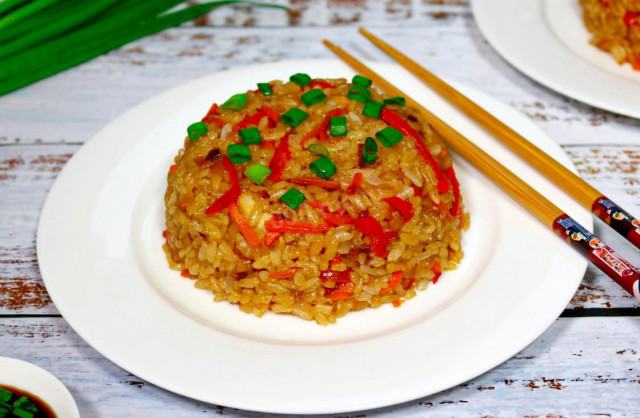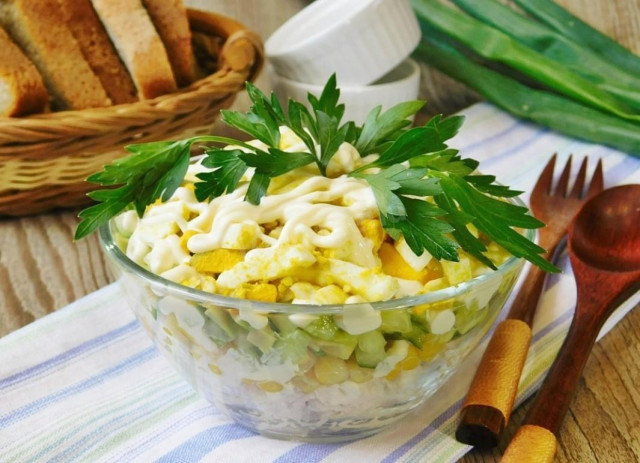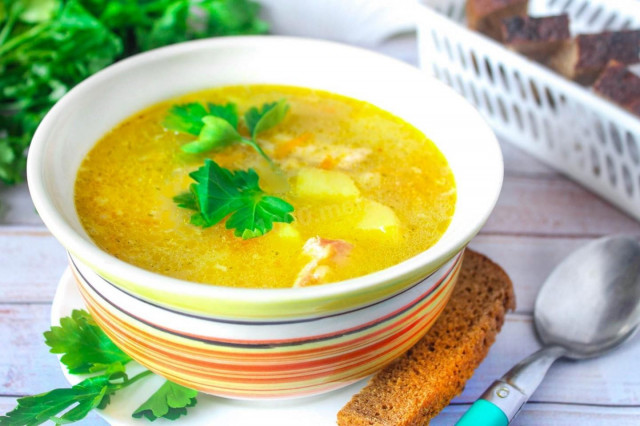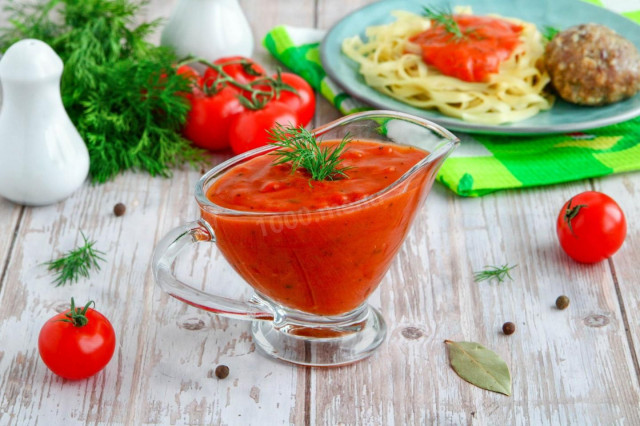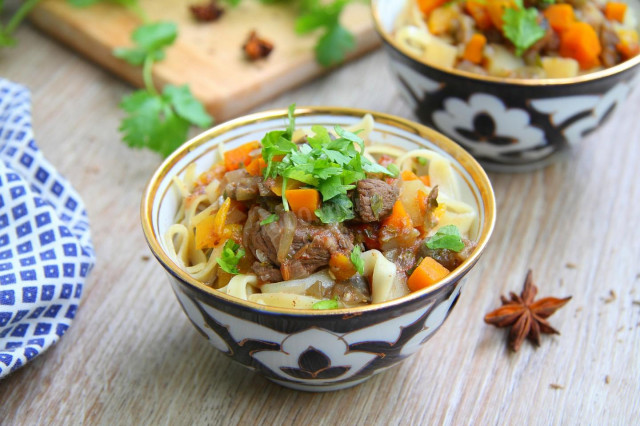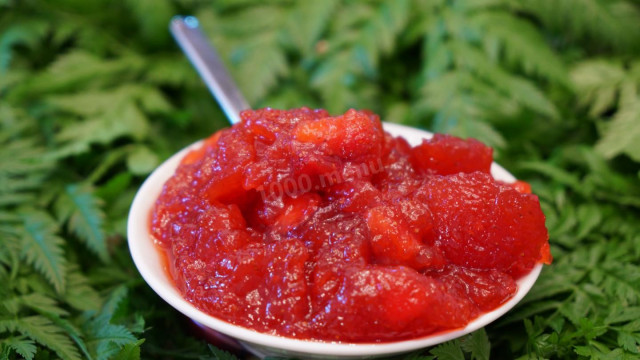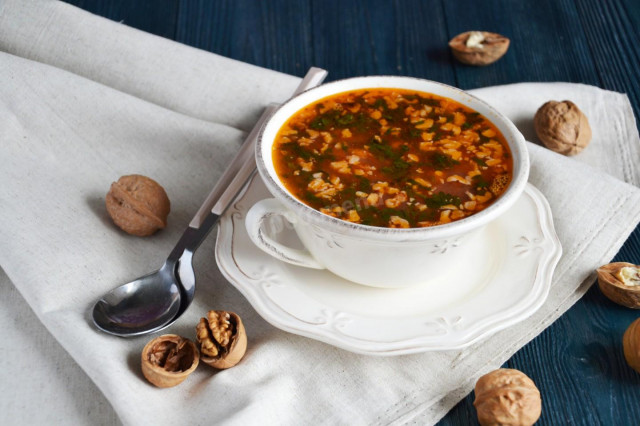Composition / ingredients
Step-by-step cooking
Step 1:
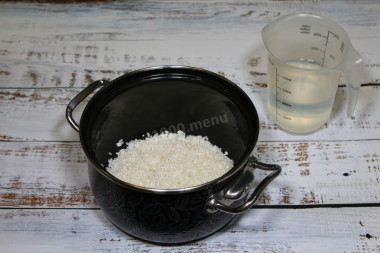
How to make tyakhan with chicken and vegetables? First of all, boil the rice. How to cook rice? Rinse it in cold water. Put the rice in a saucepan, pour in the water. Cover the pot with a lid and put it on high heat. Bring the rice to a boil, then make the heat minimal and cook the rice for about 15 minutes. Do not open the lid when cooking rice. Cook the rice until it has absorbed all the water, then turn off the heat and leave the rice under the lid for another 10-15 minutes.
Step 2:
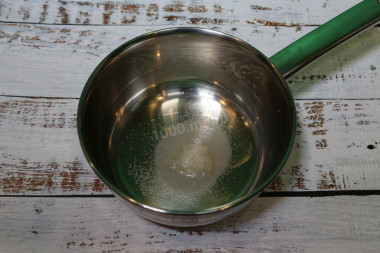
At this time, mix vinegar, salt and sugar in a separate small container. Pour the resulting liquid into a ladle and put it on a slow fire. Bring the contents of the ladle to the complete dissolution of granulated sugar and salt, when preparing this mixture, it must be stirred all the time.
Step 3:
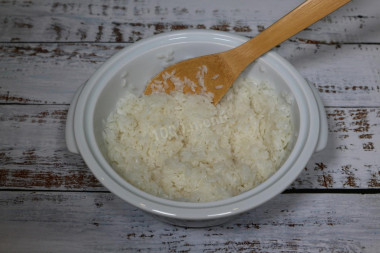
Put the ready-made rice in a non-metallic dish, pour it with the newly prepared vinegar mixture. Mix everything carefully with a wooden spatula. Put the rice aside for now, and proceed to the vegetables.
Step 4:
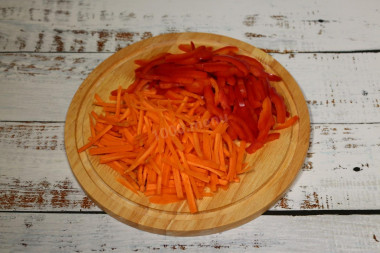
First of all, wash all the vegetables thoroughly. Peel the onion and carrot, remove the stalk and seeds from the pepper. Cut the peppers and carrots into strips (I use a slicer, it's faster, and the straws are the same).
Step 5:
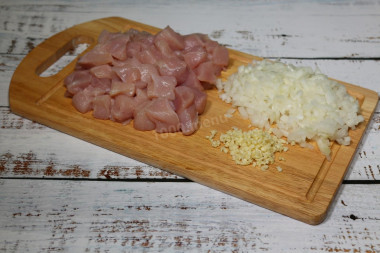
Finely chop the onion, garlic and ginger. Be careful with ginger, it has a rather specific taste (for an amateur). So if I use it fresh, then I add just a little bit, if ground, then I put more. Their taste in the dish is revealed in different ways. Then cut the chicken into small pieces.
Step 6:
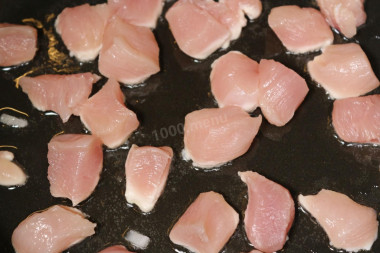
Take a wok frying pan or, if there is none, an ordinary deep frying pan, pour in a little vegetable oil. Preheat a frying pan over medium heat. Lay out part of the chopped chicken, fry it quickly until golden brown, transfer to a plate. Fry the next part and so on until all the pieces are fried. This is done so that the chicken remains juicy and does not let the juice out.
Step 7:
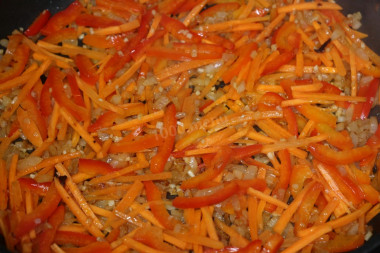
In the same pan, now fry the onion, stirring it constantly for 2 minutes, then add the garlic and ginger. Fry the ingredients for another 1 minute. Next, add the previously prepared carrots and bell peppers. Fry the ingredients for another 3 minutes, stirring the contents of the pan periodically. After 3 minutes, add the fried chicken pieces.
Step 8:
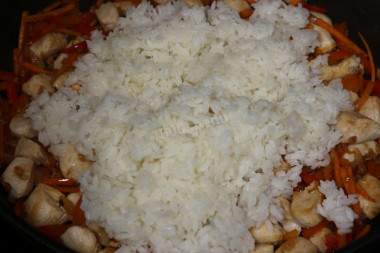
Lay out the fig. Stir the contents of the pan and use a spatula to "break" the lumps formed. After a minute, pour in the soy sauce, mix everything well again. Immediately arrange the dish on plates, when serving, decorate the tyakhan with chopped green onions.
Step 9:
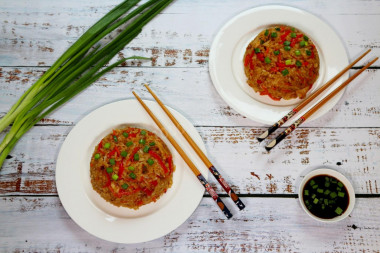
Wot ? ?????????! &039;Itadakimas!&039; Bon appetit!
Important! To make rice dishes invariably delicious, read the article about the subtleties of choosing rice and the secrets of its preparation .
Since the degree of salinity, sweetness, bitterness, sharpness, acid, burning is individual for everyone, always add spices, spices and seasonings, focusing on your taste! If you put some of the seasonings for the first time, then keep in mind that there are spices that it is especially important not to shift (for example, chili pepper).
For cooking, it is better to use filtered or bottled water that is neutral to taste. If you use tap water, keep in mind that it can give the dish an unpleasant characteristic taste.
Caloric content of the products possible in the composition of the dish
- Onion - 41 kcal/100g
- Raw wild Rice - 353 kcal/100g
- Brown raw rice - 360 kcal/100g
- Boiled brown rice - 119 kcal/100g
- White fortified raw rice - 363 kcal/100g
- White fortified boiled rice - 109 kcal/100g
- White rice, steamed, with long grains raw - 369 kcal/100g
- Steamed white rice, boiled with long grains - 106 kcal/100g
- Instant dry rice - 374 kcal/100g
- Instant rice, ready to eat - 109 kcal/100g
- Fig - 344 kcal/100g
- Sweet pepper - 27 kcal/100g
- Carrots - 33 kcal/100g
- Dried carrots - 275 kcal/100g
- Boiled carrots - 25 kcal/100g
- Garlic - 143 kcal/100g
- Ginger - 80 kcal/100g
- Dry ginger - 347 kcal/100g
- Pickled ginger - 51 kcal/100g
- Soy sauce - 51 kcal/100g
- Granulated sugar - 398 kcal/100g
- Sugar - 398 kcal/100g
- Vegetable oil - 873 kcal/100g
- Green onion - 19 kcal/100g
- Salt - 0 kcal/100g
- Water - 0 kcal/100g
- Chicken breast (fillet) - 113 kcal/100g
- Rice vinegar - 20 kcal/100g

